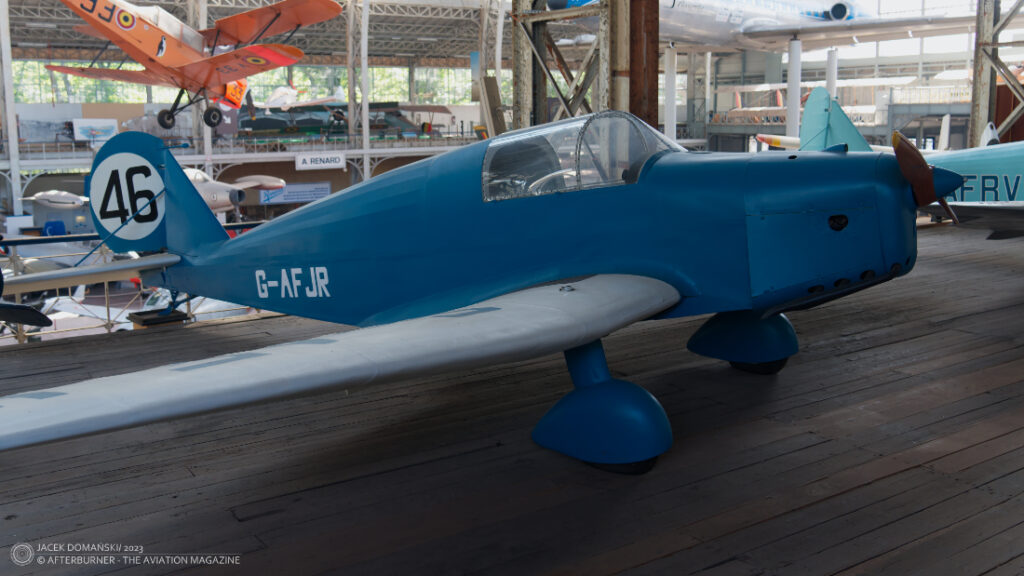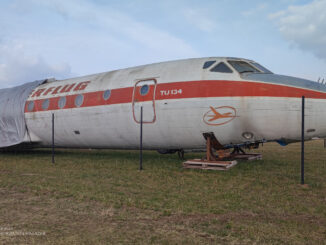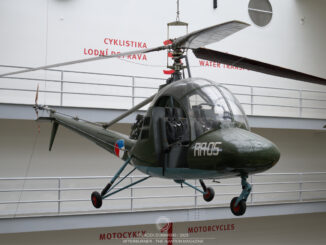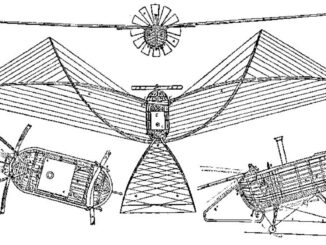
Avions Fairey Belfair, also known as Tipsy Belfair (c/n: 2, OO-DUN, then G-AFRJ), exhibited at the Royal Museum of the Armed Forces and Military History, Brussels, September 2023.
Ernest Oscar Tips, born on 2nd October 1893 in Tielrode, was a Belgian aircraft designer and aviation pioneer. In 1908, together with his brother Maurice, Ernest Tips built his first canard aeroplane, followed by a biplane they made a year later.
During the Great War, Ernest Tips learned aviation engineering at Short Brothers and became a close friend to Charles Richard Fairey. In 1915, Fairey and Tips founded the Fairey Aviation Company. After the war, Tips returned to Belgium and in 1931 opened there a subsidiary company named Avions Fairey.
Until the outbreak of the World War II, Avions Fairey was one of the aircraft suppliers to the Belgian Air Force (Fairey Firefly II, Fox, Fantôme and Battle). In addition, Ernest Tips created a whole family of light civil and sport aircraft that achieved a great success and were commonly known as ´Tipsy´. Among them there were Tipsy S and S2 single-seat aeroplanes, Tipsy M tandem trainer and Tipsy B in side-by-side seat configuration. During the war, the company personnel was evacuated to England and worked for the Fairey company there.
In 1946, Avions Fairey resumed operations. Initially, the company took care of maintenance of C-47 Skytrain aeroplanes from the air force but quite soon, Ernest Tips returned to creating his small sport aircraft.
The first post-war aeroplane was designed Belfair and was based on the earlier Tipsy B. It was a low-wing monoplane with fixed undercarriage of classic configuration and powered with Walter Mikron II engine, generating 62 hp. The Belfair had an enclosed cockpit for the crew of two, in side-by-side configuration. The aeroplane had doubled rudder pedals while the yoke was located in central position, so the aeroplane could be flown from both seats.
The Tipsy Belfair performed its maiden flight in November of 1946. In July of the next year, the aeroplane was introduced to public during the international aviation fair in Brussels and then participated in a series of domestic air shows.
The Belfair turned out to have an incredibly good performance. One of the examples (the aeroplane registered as OO-TIC, c/n: 533) set two world distance records in FAI class 1A of aeroplanes under 500 kg. For the first time it was in 1950, when the Belfair flew the distance of 945 kilometres. In 1955, the record was improved to awesome 2,635 kilometres.
Regrettably, despite the amazing performance, only a few examples of the Belfair were built. The aircraft was not able to find more customers due to so-called ´light aircraft crisis´ that occurred after the World War II. The new, post-war designs were not able to compete with the price of surplus military aircraft that were not only significantly cheaper but offered in large quantities. The Belfair was priced at 200,000 Belgian Francs, while former military light aircraft were sold for a mere fraction of that.
After completing just three examples of the Belfair, Tips realized they are not marketable. Therefore, the other four aircraft that were in different stages of manufacturing, were sold ´as is´ and their production was ceased.
The aeroplane featured within our Photo of the Week series is an additional, eight example of the Belfair. It was made in 1958 by conversion of the pre-war Tipsy Trainer, a late variant of the Tipsy B (c/n: 512). That aircraft was operational until the late 1980s, when it was removed from the register and found its final home in the Royal Museum of the Armed Forces and Military History in Brussels.
Although Ernest Tips´ return to the sport aircraft market was unsuccessful, Avions Fairey well continued its cooperation with the military. The company manufactured Gloster Meteor jets for the Dutch and Belgian air force (in cooperation with Fokker), then made fuselages for Hawker Hunter, performed maintenance for F-104 Starfighters, as well as bult some Trislander utility aircraft.
Ernest Tips retired from the aviation industry in 1960. His company was taken over by the Belgian government and was involved in creation of the national programme to acquire and manufacture the F-16 Fighting Falcon. In 1978, the Avions Fairey company was incorporated into Societe Nationale de Construction Aerospatiale (SONACA), Belgian aerospace company. Today, SONACA´s activities include development and manufacture of aviation structural components, as well as design and production of space structures.



